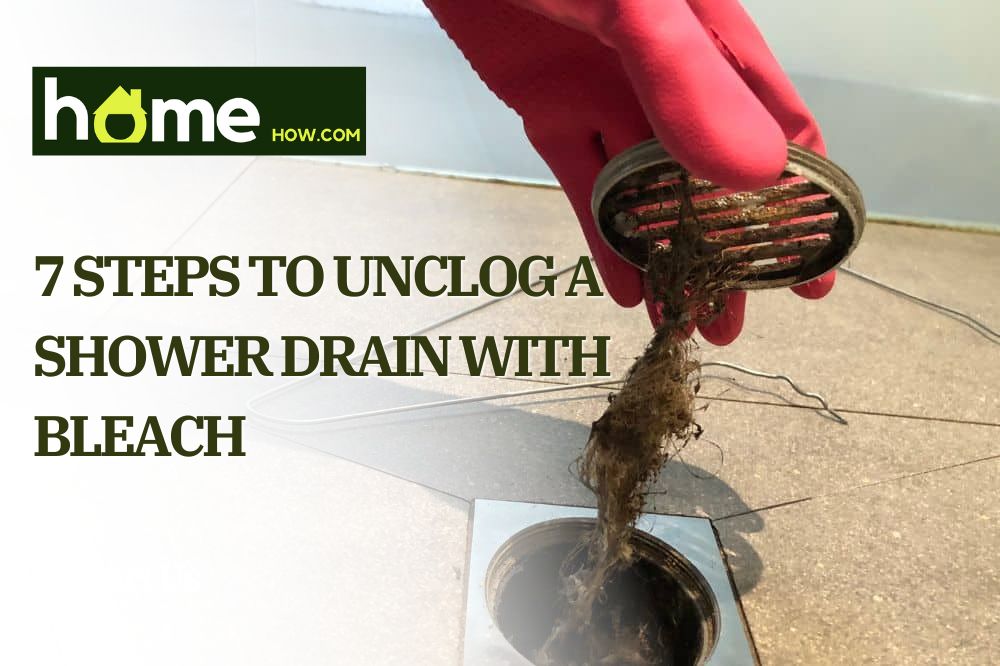A clogged shower drain can be a major inconvenience, leaving your tub or sink full of standing water pool while you shower. But don’t worry! There’s a fix for this — use bleach.
This article provides a quick and easy DIY solution for unclogging your shower drain using bleach. This method removes the hair, soap scum, mold, and other debris that can cause blockages.
So, if you’re ready to say goodbye to standing in a puddle and hello to a smoothly flowing shower drain, keep reading to learn how to unclog your shower drain using bleach.
How Does Bleach Unclog Your Shower Drain?
Bleach can unclog a shower drain by breaking down and dissolving the buildup of hair, soap scum, and other debris that can accumulate in the pipes. To use bleach to unclog a shower drain, pour a mixture of bleach and hot water down the drain. Then, let it sit for several minutes before flushing the drain with hot water.
Remember to use gloves when handling bleach and ensure the room is well-ventilated. It’s also important to note that you shouldn’t use bleach on aluminum or older pipes as it may cause damage.
Typically, you can use standard household bleach to unclog a shower drain. These bleach types usually contain sodium hypochlorite solution, effectively breaking down and dissolving organic matter, such as hair and soap scum.
You should use liquid bleach rather than powdered bleach, as the powder can be abrasive and damage your pipes. In addition, ensure the use of bleach in the right proportion — excessive use of bleach can cause damage to pipes. It can also be harmful to human health and the environment.
How Effective Is Bleach for Unclogging a Shower Drain?
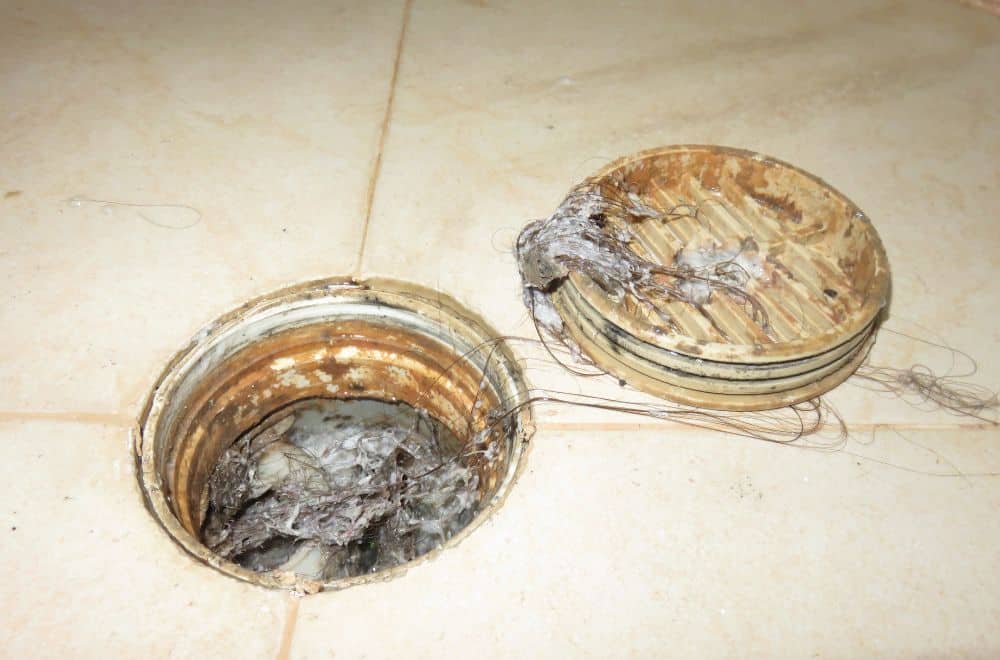
Using bleach to unclog a bathtub drain can effectively break down and dissolve the buildup of hair, soap scum, and other debris in the pipes. However, its effectiveness depends on several factors. These factors include:
- the type and amount of buildup in the drain,
- the type and condition of the pipes, and
- the strength of the bleach solution used.
In some cases, the bleach may not be strong enough to break down the buildup, or the buildup may be too extensive for a simple “bleach and hot water” fix.
Suppose the clog remains after using bleach. In that case, you may need to consider other methods, such as a plunger, a plumbing snake, or calling a professional plumber.
The Step-by-Step Guide to Getting Rid of Clogs With Bleach
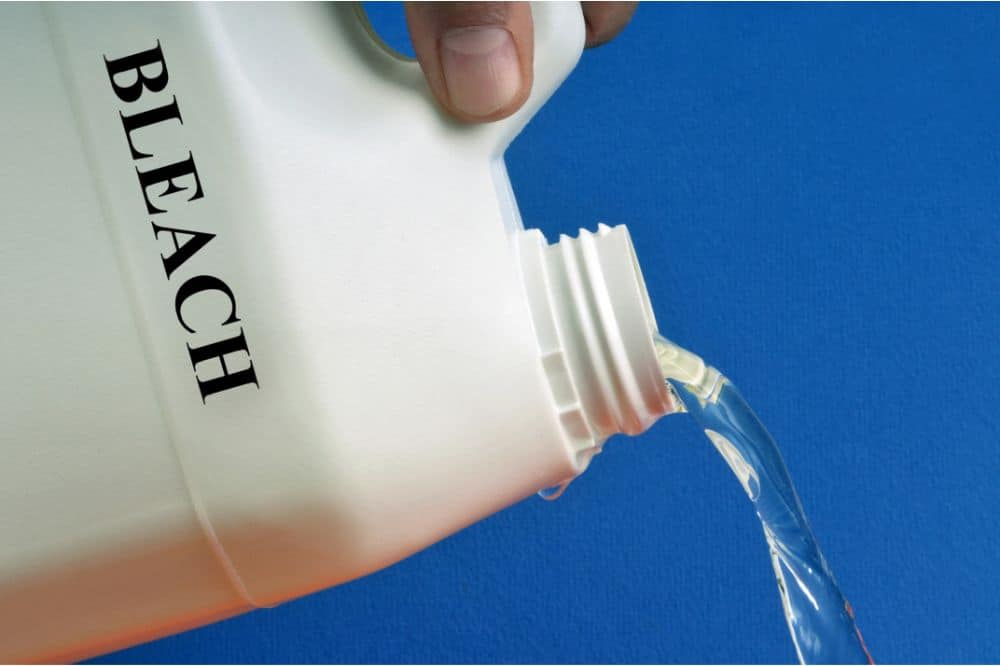
Here’s a stepwise tutorial guide on how to unclog a shower drain using bleach:
Step #1: Protect yourself.
Wear rubber gloves and make sure the room is well-ventilated.
Step #2: Prepare the solution.
Mix one cup of bleach with one gallon of hot water.
Step #3: Pour the solution into the shower drain.
Slowly pour the solution into the shower drain opening (or down the bathroom sink if you want to unclog your sink drain).
Step #4: Wait.
Let the solution sit for at least 15 minutes or longer if the clog is particularly stubborn.
Step #5: Flush the drain.
Slowly pour hot water to flush out the bleach solution and any debris that the bleach has loosened.
Step #6: Repeat some steps if necessary.
If the clog remains, repeat steps 3–5.
Step #7: Final flush.
After the final flush, run cold water for a minute to ensure no residual bleach sits in the pipes.
Pro Tip: Avoid using bleach on aluminum or older pipes, as it may cause damage. Also, don’t use bleach if there’s any possibility of a septic system, as it may kill the beneficial bacteria. Finally, always check the label and follow the bleach container’s instructions before using it.
How Can You Tell if the Bleach Method Worked?
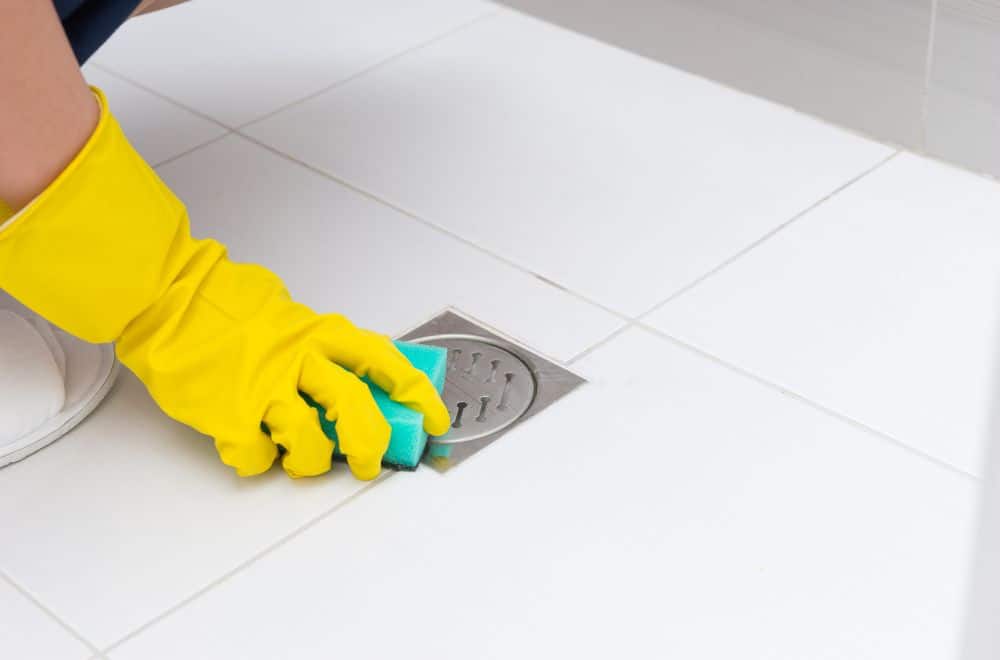
You can tell if the bleach method has worked by checking the water flow in your shower drain. The water should flow freely down the drain, and there should be no water pooling in the tub.
Run water in the shower or bathtub for some time. If the water drains away quickly, it means the clog is gone. However, if the drain is still clogged or slow, it’s likely that the clog is further down the pipe and may require more invasive methods, such as using a plumbing snake or contacting a plumber.
Also, suppose you notice any strange smells or water discoloration after using bleach. In that case, it’s a sign that you might not have fully removed the clog, and you should contact a professional plumber to inspect the pipes.
Bleach Doesn’t Unclog My Shower Drain: What Else Can I Do?
In a case where bleach doesn’t do the trick, you can use several methods to fix a clogged drain, including the following:
- Plunger: A toilet plunger can create suction and loosen debris in the pipes.
- Drain snake: A plumbing snake is a long, flexible tool you can insert into the pipes to break up and remove clogs. A popular one is the Zip-It brand.
- Baking soda and white vinegar: Mixing baking soda and white vinegar creates a chemical reaction that can break up clogs.
- Boiling water: Pouring boiling water down the drain can help to melt grease and loosen debris.
- Chemical drain cleaners: You can pour these chemical solutions down the drain to break up clogs.
- Manual removal: Manually remove the clog with the help of a wire hanger.
Note that some of these methods can be dangerous or ineffective, and it’s always best to take precautions when attempting to clear a clog. And, if you’re unsure about what you’re doing, it’s always best to call a professional plumber.
Is Using Bleach to Unclog Drains Safe for Your Plumbing?
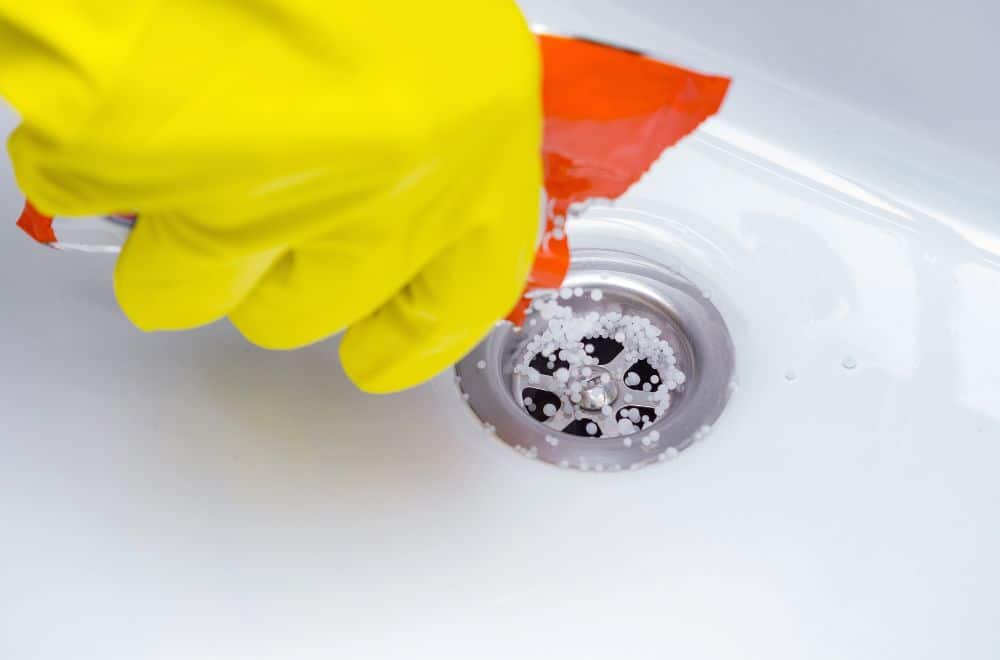
Using bleach to unclog drains can be safe for your plumbing if used in the right proportion. However, it’s important to be cautious when using bleach as it can be harmful if not handled properly.
It’d be best if you didn’t use bleach on aluminum or older pipes, as it can cause damage. Also, bleach can damage some plastic pipes, so checking the type of pipes in your home before using them is essential.
Furthermore, excessive use of bleach can generally cause damage to pipes and also be harmful to human health and the environment. It’s important to follow the instructions on the bleach container’s label and not exceed the recommended amount.
It’s always best to run a test using a small amount of bleach and check for any damage before using more. Suppose you need clarification about the safety of using bleach in your plumbing. In that case, it’s always best to call a professional plumber to assess the situation.
Finally, it’s important to remember that you shouldn’t use bleach if there’s any possibility of a septic system, as it may kill the beneficial bacteria.
Frequently Asked Questions
What is the fastest way to unclog a shower drain?
Finding out what created the clog in your shower drain is the quickest way to get your shower drain working again. This approach will allow you to choose the most effective method of unclogging your shower drain — bleach, a drain snake, or any other means.
How much bleach does it take to unclog a shower drain?
Adding between 1/5 and 3/4 of a cup of bleach to your shower drain might just be enough to unclog your shower drain. The required amount of bleach you should use, as well as its chances of success, depends on the nature of the clog.
Is it okay to leave bleach in the shower overnight?
No, it’s not.
Bleaches can have hazardous effects on drain pipes; generally, you shouldn’t leave them in your drain for more than 15 minutes.
How long should you leave bleach in the shower drain?
Generally, you should leave bleach in your shower drain for about 10–15 minutes before flushing it down with hot water. However, it’s best if you check the manufacturer’s instructions for the product you’re using.
Will Coke dissolve hair in a drain?
Contrary to popular misconception, Coke can’t dissolve hair in a drain — not even Pepsi or Coca-Cola. On the other hand, they can assist in clearing out any debris clogging the drain and trapping hair. That’s because these beverages contain phosphoric acid.
Summary
Unclogging a shower drain can be frustrating, but using bleach is a fast and easy solution that can help break down and dissolve the buildup of hair, soap scum, and other debris in the pipes.
You can effectively remove clogs by mixing bleach and hot water and pouring it down the drain. However, it’s important to be cautious when using bleach and ensure that it’s appropriate for your pipes and your home’s plumbing. You should also always wear gloves and make sure the room is well-ventilated.
Additionally, it’s essential not to overuse bleach and always follow the instructions on the label. If the clog still needs to be cleared after using bleach, or if you need more clarification about the safety of using it in your plumbing, it’s always best to call a professional plumber to assess the situation.
